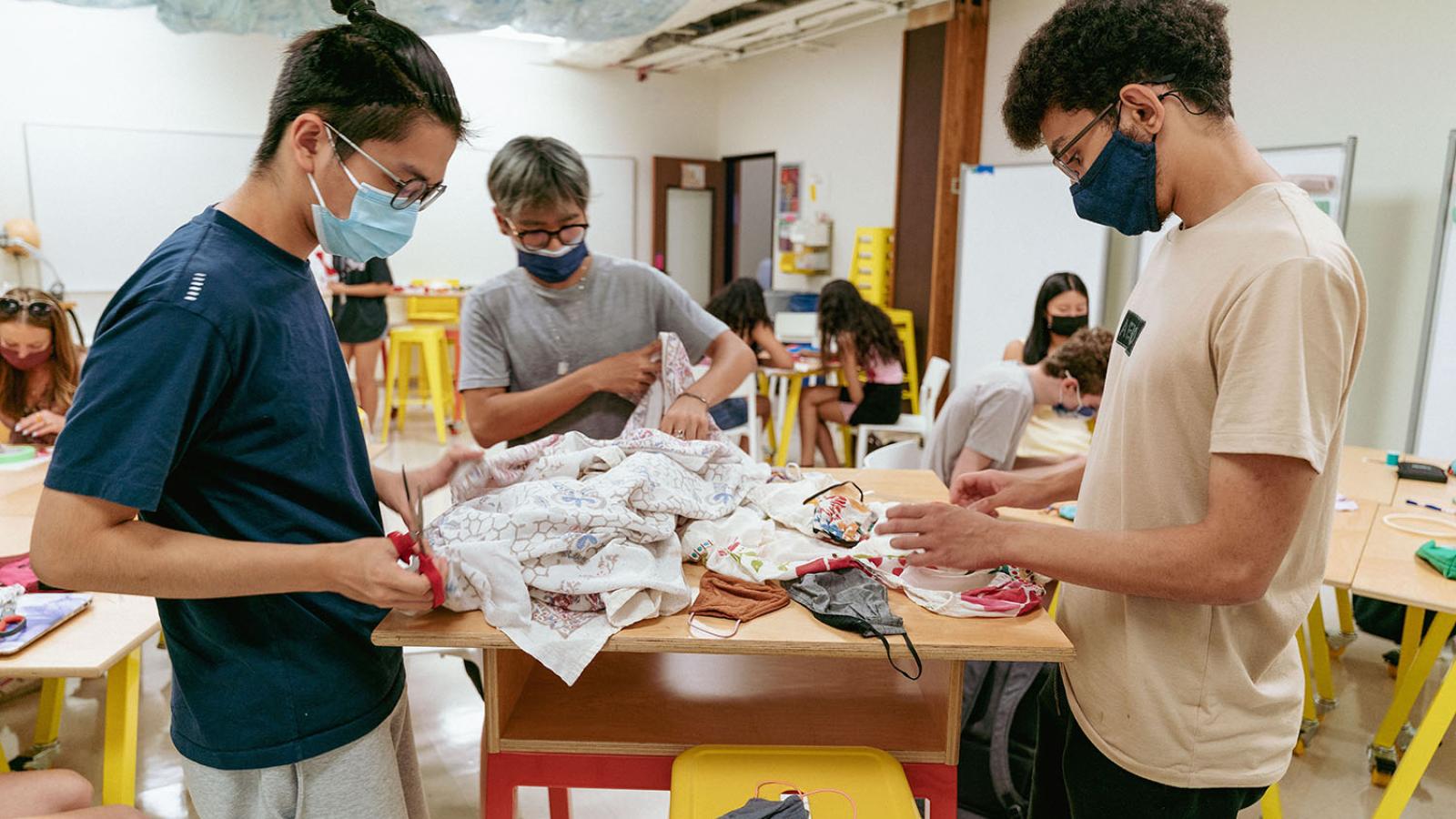As classes began at Pomona College last week, all first-year students have one course that’s required in their schedule: Critical Inquiry Seminar, or ID1, as it’s more commonly known. Before arriving on campus, students ranked their seminar preferences, choosing from over 30 classes on varied topics taught by faculty from across the disciplines.
Among the eight new seminars offered this year:
Public Art, Monuments and Monumentality
Victoria Sancho Lobis, director of the Benton Museum of Art at Pomona College and associate professor of art history, is teaching a course motivated by these questions: What purpose do public monuments serve? What distinctions can we draw between public monuments and public art? Which values can and should motivate a commission for public art or public monuments?
Lobis was inspired by the College’s recent site-specific sculpture commission, “Imbue” by Alison Saar, now permanently installed in the northwest corner of the Benton’s courtyard. At the same time, she and the museum staff have been reflecting on recent removal or defacement of monuments representing individuals active in the slave trade, the Confederate forces or in groups actively involved in the suppression of Indigenous communities. The museum staff continues to think about how monuments and publicly visible works contribute to dynamics of power.
Last year, Lobis worked with students remotely to research works of public art on campus. “There are quite a few, many of which are probably overlooked on a day-to-day basis,” she says. Students in the course will discuss works of public art and public monuments located both on the campuses of The Claremont Colleges and in the adjacent Claremont Village.
“I am eager to learn from first-year students how they interact with public art, and more specifically, how they perceive the works that are installed across campus, which include José Clemente Orozco’s Prometheus mural in Frary Dining Hall and James Turrell’s Skyspace in the science quad,” Lobis says. As an added benefit during the continuing pandemic, the course will provide many good reasons to hold class outdoors.
Magnificent Cities
In Professor of Economics Fernando Lozano’s class, students will consider: Which are the great cities in history? What are the historical, economic and social forces that promote them?
Students will explore the economic determinants of urban life and why bringing people closer in space generates opportunities that foster economic growth.
Lozano is excited to accompany students on their writing journeys. “Regardless of field, good writing is good writing, and good writing is by itself a powerful tool of learning,” he says. Lozano is especially looking forward to an assignment in which the students will write a travel journal from a city in history, fictional or not. As a creative piece, it will be “a lot of fun to read,” he says.
Aphrodite and the Power of Love
Visiting Assistant Professor of Classics Jody Valentine asked herself how her course could best provide support to students coming into Pomona after a year of social isolation—and she decided to create a class that is, at its heart, about creating connections.
Students will study the power and meaning of love in diverse works of literature, philosophy and art, seeking to answer questions such as, “Is love transhistorical and universal or socially-constructed and subjective? How does love promote social justice activism?” Additionally, students will reflect on how their personal histories shape their understanding of love. Valentine hopes students will not only understand but also cultivate the transformative power of love in this class.
Perhaps most exciting to Valentine is that the students will make a quilt. Meeting in weekly “study circles” modeled on abolitionist sewing circles, students will discuss assigned readings and their own essays while collaboratively piecing together a work of art. Valentine shares, “I am so excited for the students to have the time and space to work together on a creative project while engaging in dialogue with one another.” She is also looking forward to seeing what the quilt will look like at the end of the semester.
Islam and Media
“Analyzing portrayals of Islam and Muslims in various forms of media is perpetually timely in the context of the United States and its socio-political role on a global scale,” says Ayat Agah, visiting assistant professor of religious studies.
In Agah’s course, students will critically analyze the portrayal in U.S. media of Muslims and of Islamic belief and practice. They will consider how Muslims are rendered a racial and religious “other” through close readings of scholarly texts, film, television and news sources.
Agah hopes students will develop their media literacy skills, which they can apply both in and out of an academic setting. She looks forward to the conversations they will have about the contexts within which media is produced as well as the role of media in shaping perspectives and in providing opportunities to understand the world in which we live.
On Poor Taste
William Boyer, visiting assistant professor of American studies and media studies, poses the questions, “What is poor taste? Who decides? Is it the same thing as bad taste?”
The class will explore the changing notions of aesthetics, value, style, acceptable behavior and the appreciation of the arts throughout U.S. history. Boyer says that in previous classes he has taught, the topic of poor taste “has proven a reliably effective catalyst for conversations about the relationship between aesthetics, politics and power.”
He hopes that students will learn to articulate new connections between the styles and values of their own world with other moments in American history.
Potential topics, Boyer says, may include pumpkin spice lattes, pink flamingos, Donald Trump’s hair, boy bands, MSG and dogs playing poker.
